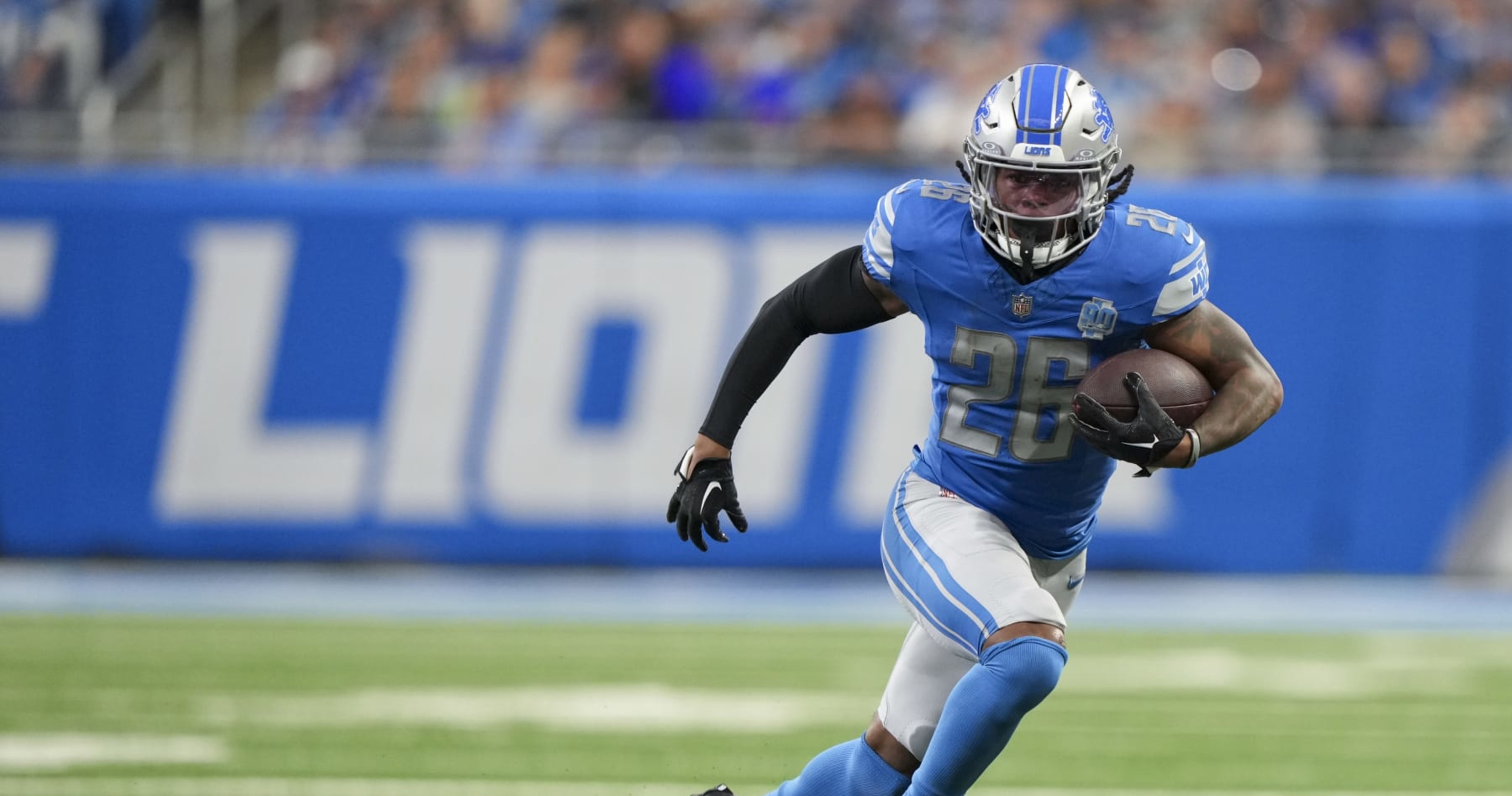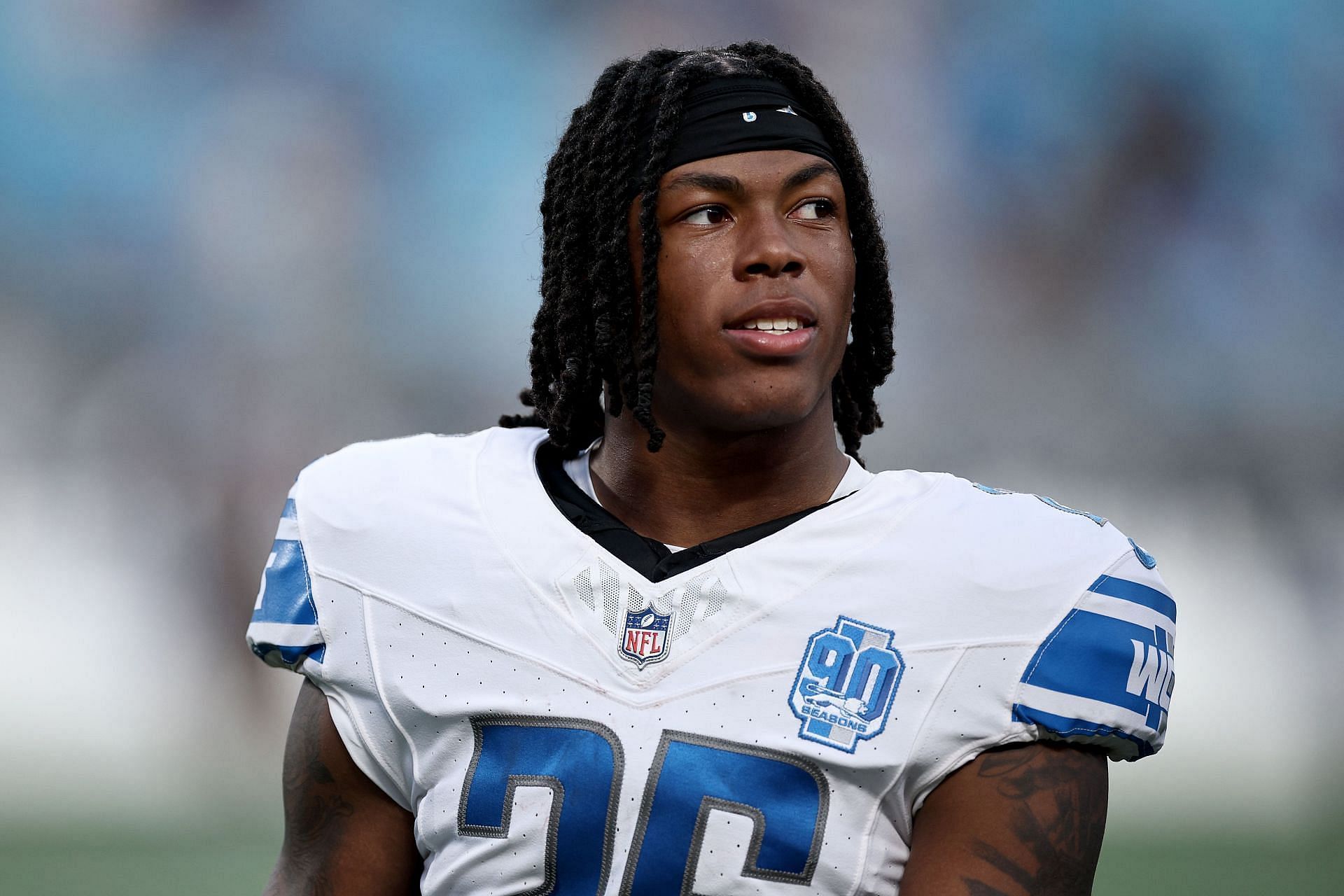Jahmyr Gibbs’ Injury History

Jahmyr Gibbs has been a standout performer in the NFL, but his career has been marred by a string of injuries. These injuries have raised concerns about his durability and potential impact on the field. Let’s delve into his injury history to understand the context of his recent setback.
Timeline of Jahmyr Gibbs’ Injuries
Gibbs’ injury history can be traced back to his college days at Alabama. This section provides a chronological overview of his past injuries, outlining the type, severity, and impact on his performance.
- 2021: During his sophomore season at Alabama, Gibbs sustained a minor ankle injury in the first game against Miami. The injury sidelined him for a couple of weeks, but he returned to the field and finished the season strong.
- 2022: Gibbs suffered a shoulder injury in the second game of his junior season against Texas. This injury required surgery and kept him out for a significant portion of the season. While he returned to action, the injury clearly hampered his performance.
“Gibbs’ shoulder injury in 2022 was a major setback, as it limited his ability to play at his full potential. He was still able to contribute, but it was clear that he wasn’t fully recovered.” – Sports Analyst
Comparison to Current Injury
The current injury is a high ankle sprain, which is a significant injury that can take several weeks to heal. High ankle sprains are more severe than typical ankle sprains, as they involve damage to the ligaments that connect the ankle bones to the lower leg. While Gibbs’ past injuries were also significant, they were different in nature and severity. The ankle sprain is a new challenge that could potentially affect his performance for a longer period.
Impact of the Injury on Gibbs’ Performance

The severity and nature of Jahmyr Gibbs’ injury will significantly impact his performance, both in the short and long term. While the specifics of the injury are crucial to understanding the full extent of its effects, we can analyze the potential consequences based on common injury scenarios.
Short-Term Impact on Performance
The short-term impact of the injury will depend on its severity and the type of injury. For example, a minor sprain might require a few weeks of rest and rehabilitation, allowing Gibbs to return relatively quickly. However, a more serious injury, like a ligament tear, could sideline him for a significant portion of the season.
- Reduced explosiveness: Any injury to the lower body can affect a running back’s explosiveness and ability to accelerate quickly, impacting their ability to break tackles and gain yards after contact.
- Limited mobility: Injuries can restrict mobility and flexibility, making it difficult for Gibbs to change direction quickly or navigate tight spaces. This can lead to fewer big plays and a less effective running game.
- Decreased confidence: An injury can affect a player’s confidence and mental state, leading to hesitation and reluctance to take risks. This can hinder their performance and overall effectiveness.
Long-Term Impact on Performance
The long-term impact of the injury will depend on the severity, the effectiveness of the rehabilitation, and Gibbs’ ability to recover fully. Some injuries can have lasting effects on a player’s career, while others can be overcome with proper care and time.
- Chronic pain: Certain injuries, like a recurring hamstring strain, can lead to chronic pain and discomfort, impacting a player’s performance and ability to train effectively.
- Limited career longevity: Serious injuries can affect a player’s long-term career longevity, especially if they are unable to fully recover and maintain their previous level of performance.
- Altered playing style: Players might need to adjust their playing style to compensate for the injury. This could involve relying more on power or speed, depending on the nature of the injury and its effects on their mobility.
Impact on the Team’s Offensive Strategy
Gibbs’ absence could significantly impact the team’s offensive strategy, forcing them to adjust their game plan and rely on other players to fill the void.
- Increased reliance on other running backs: The team might need to rely more on other running backs, who may not possess the same skillset as Gibbs. This could lead to a less dynamic and effective running game.
- Shifting offensive focus: The team might need to shift their offensive focus towards a more pass-heavy approach, utilizing their receivers and tight ends to create offensive opportunities. This could impact the team’s overall offensive balance.
- Increased pressure on the offensive line: The team’s offensive line might face increased pressure, as they will need to protect the quarterback and create running lanes for the other backs. This could lead to a more conservative approach and fewer big plays.
Rehabilitation and Recovery Timeline: Jahmyr Gibbs Injury

Jahmyr Gibbs’ recovery timeline will depend on the severity of his injury and his individual response to treatment. The rehabilitation process typically involves a multi-faceted approach, aiming to restore his strength, flexibility, and mobility.
Rehabilitation Plan, Jahmyr gibbs injury
The rehabilitation plan for Gibbs’ injury will likely include a combination of therapies and treatments, tailored to address the specific needs of his injury.
- Physical Therapy: Physical therapists will work with Gibbs to improve his range of motion, strength, and flexibility. This may involve exercises like stretching, strengthening, and balance training.
- Occupational Therapy: Occupational therapists may help Gibbs regain his functional skills, such as walking, running, and performing everyday tasks.
- Massage Therapy: Massage therapy can help to reduce pain, improve circulation, and promote healing.
- Cryotherapy: Cryotherapy involves exposing the injured area to extremely cold temperatures, which can help to reduce inflammation and pain.
Expected Recovery Timeframe
The expected recovery timeframe for a hamstring injury can vary depending on the severity. Mild hamstring strains typically take a few weeks to heal, while more severe strains may take several months.
For example, Christian McCaffrey, a running back for the San Francisco 49ers, suffered a high-ankle sprain in 2022 and was sidelined for 6 weeks.
Factors Affecting Recovery
Several factors can influence the speed of Gibbs’ recovery, including:
- Age: Younger athletes tend to recover faster than older athletes.
- Fitness Level: Athletes who are in better physical condition before the injury may recover more quickly.
- Individual Response to Treatment: Some individuals respond better to treatment than others.
Jahmyr gibbs injury – Jahmyr Gibbs’ injury is a significant blow to the Detroit Lions, particularly as they prepare for their upcoming season. The team will need to find a reliable replacement for the talented running back, and it’s worth noting that the minnesota vikings have had their own challenges with injuries in recent years, showcasing the importance of depth and resilience in the NFL.
With the season fast approaching, the Lions will be hoping for a speedy recovery for Gibbs, allowing him to return to the field and contribute to their success.
Jahmyr Gibbs, the talented running back for the Detroit Lions, has unfortunately sustained an injury. While the specifics of the injury have not been officially released, reports suggest it may involve a torn meniscus , a common injury among athletes.
A torn meniscus can significantly impact an athlete’s mobility and performance, and it remains to be seen how this injury will affect Gibbs’s playing time in the upcoming season.
